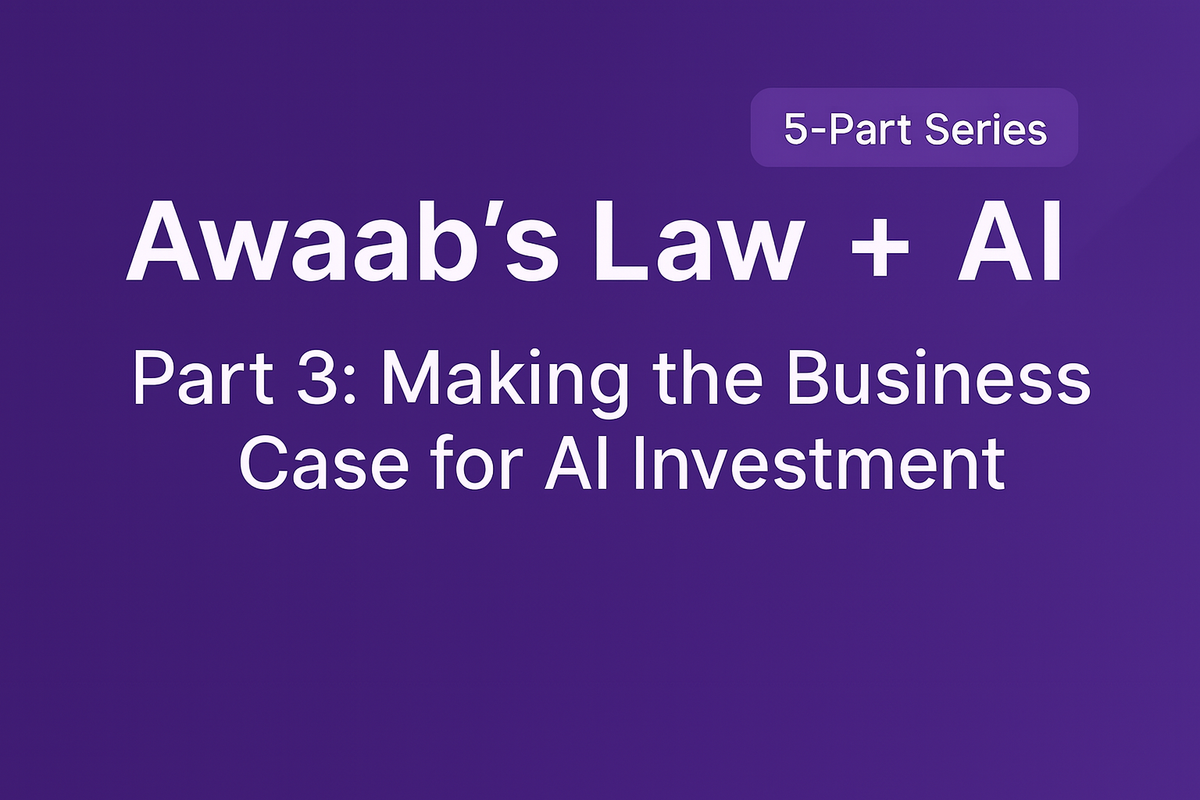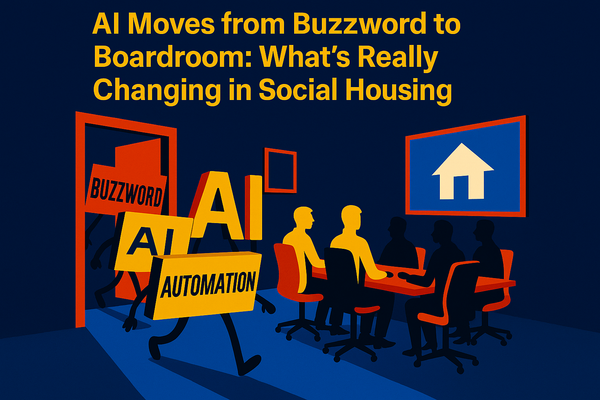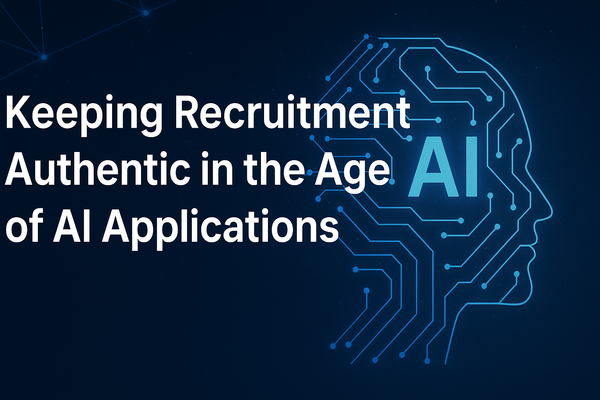Awaab’s Law Series (3 of 5): Making the Business Case for AI Investment

Framing ROI, Cost Avoidance, and Regulatory Risk for Your Board
When housing teams propose AI investment, board members often ask:
- “Is this a necessity or a luxury?”
- “How do we justify the spend?”
- “Will it actually reduce complaints, risk, or cost?”
With Awaab’s Law and evolving regulations, the answer is increasingly “yes”—but how you frame the business case is crucial.
The Real Business Case for AI in Damp and Mould
AI doesn’t have to be expensive or experimental, but it must deliver measurable value. Here’s how to present your case effectively:
1. Focus on Cost Avoidance—Not Just Efficiency
Boards are acutely aware of budget pressures, but hidden costs from delayed action are often underestimated:
| Cost Area | Example Impact (per incident) |
|---|---|
| Disrepair claims | £10,000+ in compensation and legal fees |
| Emergency decants/void loss | Significant rent loss and logistics |
| Officer time | Hours spent on repeat issues |
| Contractor overspend | Misdiagnosis leads to unnecessary work |
Case Example:
A London housing association used AI-driven risk profiling to identify properties at high risk of damp. Within six months, they reduced disrepair claims by 20% and saved over £100,000 in legal and repair costs.
AI helps avoid these costs by:
- Spotting patterns in complaints and repairs
- Surfacing hidden risks before they escalate
- Enabling faster, targeted interventions
2. Link Directly to Regulatory Risk
Awaab’s Law has changed the stakes:
- Defined timeframes: 10 working days to investigate, 5 working days to start repairs, 24 hours for emergencies
- Non-compliance can result in regulatory action and reputational damage
- Delays—even unintentional—can be classed as neglect
AI tools support compliance by:
- Providing time-stamped action tracking
- Automating alerts for overdue actions
- Profiling risk to proactively manage hazards
3. Show Quick Wins and Phased ROI
Boards worry about high costs and long timelines. Most AI solutions now offer:
- Low-cost pilots to prove value before full rollout
- Modular deployments for incremental investment
- Immediate insights from existing data (no need for a “big bang” approach)
Case Example:
A Midlands provider piloted AI triage for damp complaints, reducing average case resolution time by 30% within three months.
4. Address Challenges and Mitigation
AI adoption isn’t without risks:
- Data Quality: Poor data can reduce effectiveness. Start with data audits and cleansing.
- Bias: Ensure diverse data and regular model reviews to avoid unfair outcomes.
- Tenant Concerns: Communicate clearly that AI supports—not replaces—human decision-making.
Positioning Tips for Executive Teams
- Use language such as “risk mitigation,” “reputational safeguarding,” “complaint reduction,” and “asset protection.”
- Highlight where manual processes are too slow or inconsistent to meet legal timeframes.
- Present AI as a decision-support tool, not a tech replacement.
- Reference other sectors (insurance, utilities) where predictive modelling is standard practice.
Summary Table: ROI and Risk Reduction Pathway
| Step | AI Contribution | Benefit |
|---|---|---|
| Early Risk Identification | Pattern recognition in complaints/data | Prevents escalation, saves cost |
| Compliance Monitoring | Automated alerts, time-stamped actions | Proves statutory compliance |
| Targeted Interventions | Prioritised repairs, resource allocation | Faster resolution, fewer complaints |
| Continuous Improvement | Ongoing analytics and feedback loops | Sustained performance gains |
Conclusion
This approach ensures your business case for AI investment is:
- Factually accurate and aligned with current regulatory requirements
- Practical, with real-world examples and actionable advice
- Balanced, acknowledging both benefits and challenges
By grounding your case in cost avoidance, regulatory compliance, and phased ROI—while addressing challenges and referencing official guidance—you provide your board with the clarity and confidence needed to support AI investment.
Up Next in the Series:
Part 4: “The AI Tools You Should Be Looking At”—a practical guide to selecting and deploying AI for damp, mould, and property condition compliance.



